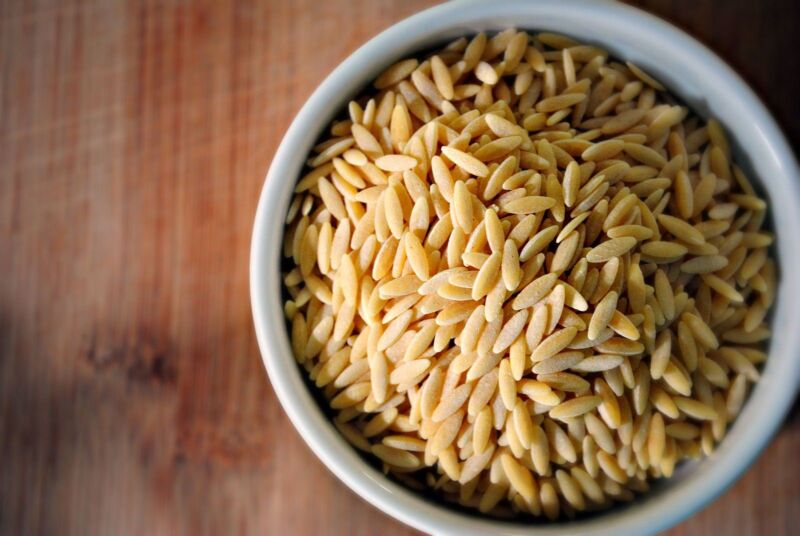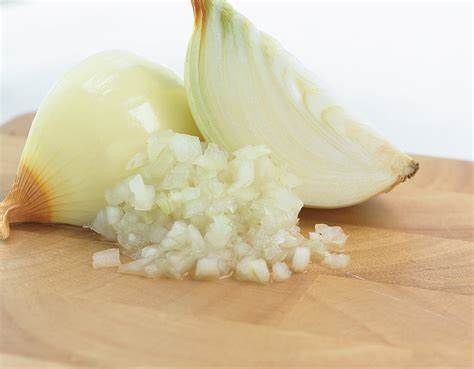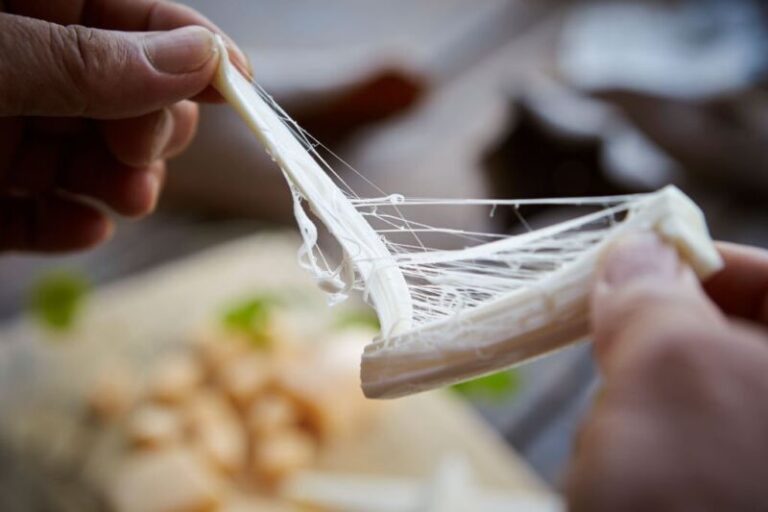Top 8 Best Orzo Substitutes
Orzo pasta is a staple ingredient in many delicious recipes. Its small rice-shaped form makes it perfect for soups, salads, casseroles, and more. But what if you don’t have any orzo on hand when a recipe calls for it? Don’t worry, there are plenty of great orzo substitutes you can use instead.
In this article, I’ll go over the top orzo substitute options to use in all your favorite recipes. I’ve included details on how their texture, taste, and cooking method compares to orzo. With this guide, you’ll be equipped to easily swap orzo for something else you have in your pantry.
Why Find an Orzo Substitute?
Orzo, also known as risoni, is a type of pasta made from semolina or durum wheat flour. It has a chewy, toothsome texture and its shape resembles large grains of rice.
Orzo is a remarkably versatile ingredient used in:
- Soups
- Salads
- Casseroles
- Side dishes
- Baked pastas
But what if you don’t have any orzo at home when a recipe calls for it? Substituting with something similar is an easy fix.
The good news is there are many suitable orzo substitutes to choose from. The options below work well to mimic orzo’s texture and absorb flavors in dishes.
Top 8 Best Substitutes For Orzo
Acini Di Pepe
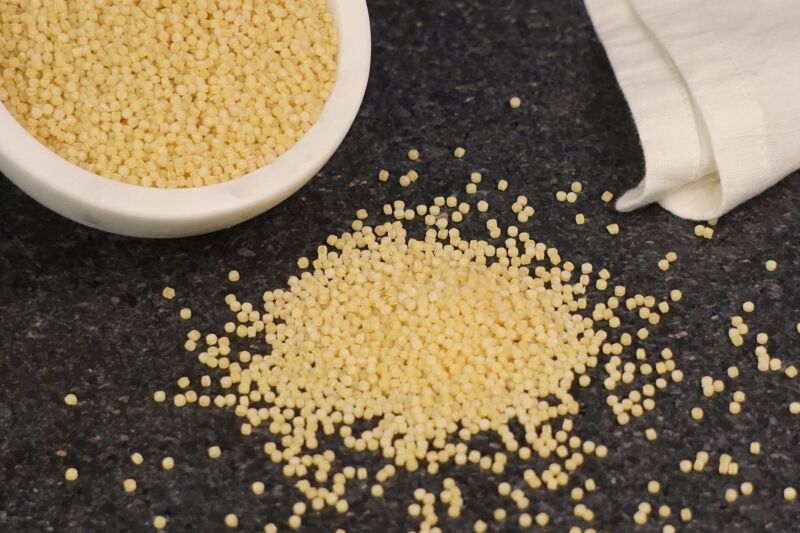
Acini di pepe is one of the best substitutes for orzo in terms of visual resemblance. These tiny pasta beads look nearly identical to orzo.
Acini di pepe has a similar bite-sized shape and pillowy texture when cooked. This makes it an ideal substitute for light pasta salads, soups, and other broth-based dishes that would commonly use orzo.
If I’m making a simple pasta salad, acini di pepe is my go-to swap for orzo. Just prepare it the same way by boiling until al dente. Mix it into a pasta salad with chopped fresh vegetables, cheese, olives, and Italian dressing.
For hearty soups, I like to sauté acini di pepe in olive oil with aromatics like onion and garlic. Then I’ll add in broth and vegetables and simmer until the pasta is cooked through. Finish it off with Parmesan for extra flavor.
The cooking time is similar for acini di pepe and orzo – around 8 to 12 minutes. Rinse the pasta in cold water after cooking to prevent sticking.
With its petite round shape and versatility, acini di pepe is one of the closest matches you’ll find to replace orzo in recipes.
Quinoa
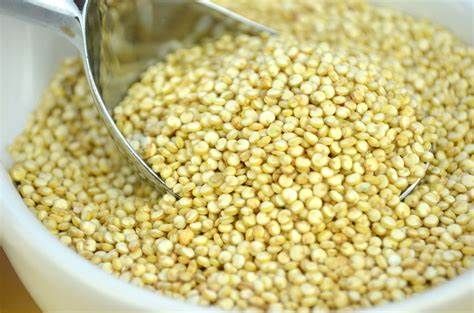
Using quinoa in place of orzo adds a healthy, gluten-free twist to recipes.
Quinoa contains more protein and nutrients than orzo, with all of the essential amino acids. It’s a good ingredient swap for those avoiding gluten.
For an easy quinoa side dish, simply cook it as you would pasta. Use a 1:2 ratio of 1 cup quinoa to 2 cups liquid. Simmer until fluffy and tender, about 15 minutes.
You can also toss cooked quinoa into chilled salads. It will retain texture just like orzo pasta. Try substituting quinoa in your favorite Italian pasta salad recipes.
For hearty soups, quinoa stands up to broth and absorbs flavors well. Add it to minestrone, chicken noodle soup, or vegetable soup instead of orzo.
Just keep in mind that quinoa has a fluffier, less chewy texture than orzo when cooked. So the consistency will be a bit different in recipes.
Arborio Rice
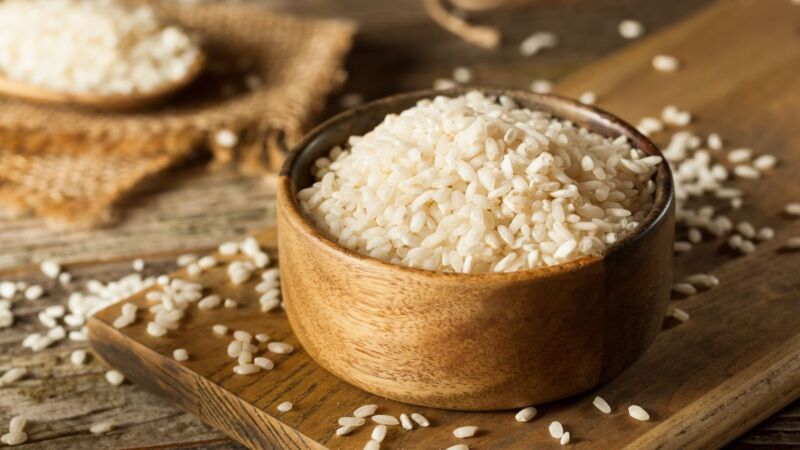
Arborio rice is best known for risottos, but it also makes a smooth, creamy orzo substitute. When cooked, arborio rice has a distinctive plump, chewy texture that orzo shares.
For cold pasta salads, arborio rice holds up well when mixed with vegetables, cheese, meat, and sauce. Just be sure to rinse it after cooking to remove excess starch.
In soups and stews, arborio rice can mimic orzo’s thickness. It absorbs broth flavors nicely. Cook it the same way you would orzo by simmering in broth until tender.
I recommend using a ratio of 2 cups liquid to 1 cup arborio rice. The cooking time is around 15-20 minutes.
One difference is arborio rice takes a bit longer to cook than orzo. But the extra time yields rice with a luxurious, risotto-like consistency.
For the creamiest results, stir arborio rice frequently as it simmers. When done, it will be soft and creamy on the outside but with a slight bite inside each grain.
Couscous

Couscous makes a quick-cooking substitute for orzo that works well in salads, soups, and side dishes.
Like orzo, couscous is made from semolina wheat. But it has a unique, fluffier texture when cooked.
I like using Israeli (pearl) couscous in particular as a substitute, since it has larger grains compared to traditional Moroccan couscous.
Israeli couscous is perfect in cold salads. Simply pour boiling water or broth over it and let it steep off heat for 5-10 minutes. Fluff with a fork. The pearls will absorb the liquid as they plump up.
For more flavor, try tossing cooked Israeli couscous into a salad with cucumbers, cherry tomatoes, feta, and basil.
You can also cook Israeli couscous in savory broths. Add it to vegetable or chicken noodle soup recipes instead of orzo. It will soak up the broth’s flavor as it simmers.
Traditional fine-grain Moroccan couscous also works as a stand-in for orzo. This style is best for making fluffy side dishes.
Overall, couscous is one of the quickest cooking orzo alternatives. Just 5 minutes of steeping yields light, tender grains.
Short-Grain Brown Rice
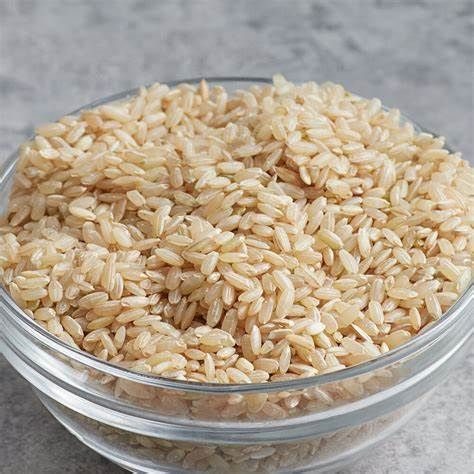
Looking for a gluten-free whole grain option? Try swapping in short-grain brown rice for orzo.
The plump, chewy grains provide more nutrients than traditional white rice. Like orzo, short-grain brown rice works well in soups, salads, and side dishes.
To cook, simply boil the rice in salted water for around 30 minutes. Then drain it and let the grains steam for 10 minutes to get tender and fluffy.
For cold rice salads, boil brown rice then rinse, drain, and chill it before mixing with vegetables and dressing. Don’t overcook it initially or the grains will turn mushy when refrigerated overnight.
In soups or stews that call for orzo, you can add raw short-grain brown rice directly to the broth. Cook it together with the other ingredients. The rice will soak up flavors as it simmers.
Just keep in mind short-grain brown rice takes longer to cook than orzo. But the wait yields great texture and added nutrition.
Fregola
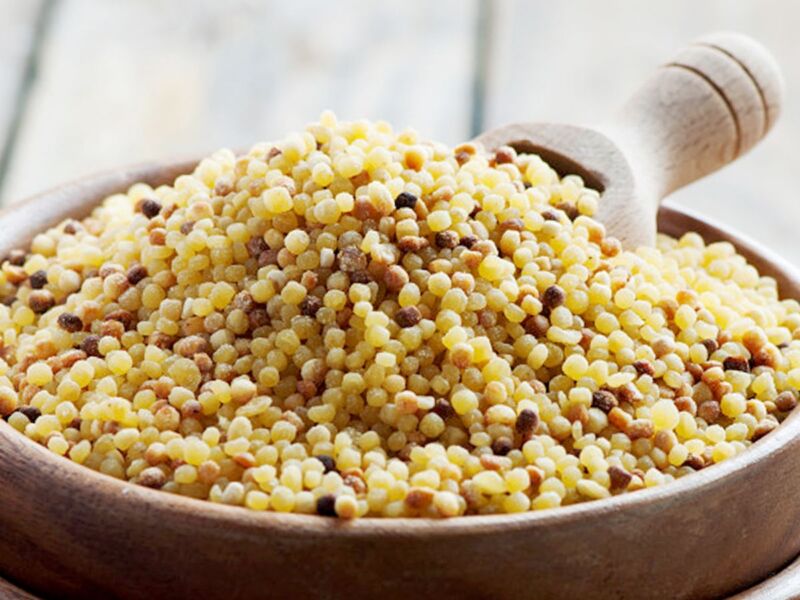
Fregola is a traditional Sardinian pasta that makes for a delicious orzo swap. It has a similar semolina-based ingredient list to orzo.
The texture of fregola is chewier and heartier than orzo, with an appealing nutty, toasted flavor.
Fregola works best in dishes where you want the pasta to hold its shape and have some bite. It’s great cooked up in rustic soups and stews, especially with seafood. The nubs of pasta absorb the surrounding broth flavor.
Some other ideas are using fregola in place of orzo for baked pastas or stuffed vegetables. Just boil the dry pasta for around 8-10 minutes until al dente.
I prefer using fregola when I want a more substantial pasta texture in a dish rather than orzo’s soft, pillowy bites.
Pearl Barley
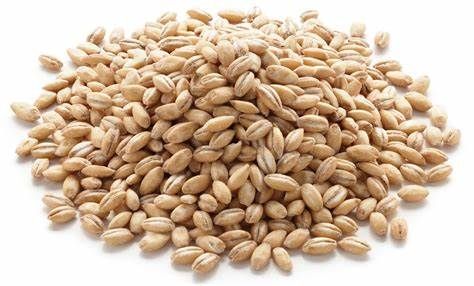
Looking for an orzo substitute with more bite? Try pearl barley. Barley has a tasty, chewy texture and nutty flavor.
Thanks to its starch content, pearl barley absorbs liquids readily and softens into an almost pasta-like consistency when cooked. But it’s still heartier than orzo with each pearl intact.
Pearl barley works well in hearty soups and stews. Try it in minestrone, beef stew, vegetable soup, or lentil soup in place of orzo.
If using it in cold salads, cook the barley first then drain, rinse, and chill it before mixing with other ingredients and dressing. This helps retain the distinct pearl shape.
For a simple side dish, cook pearl barley in broth or salted water until tender, about 30 minutes. Drain any excess liquid before serving.
The nutty flavor and firm but tender bite make pearl barley one of my go-to orzo substitutes. Just allow extra time for it to simmer until softened.
Ditalini
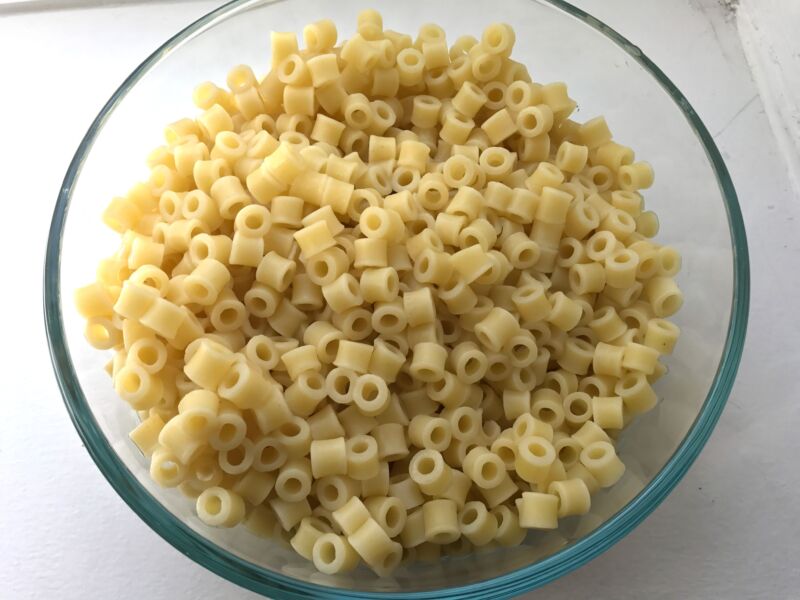
Ditalini is a tiny tube-shaped pasta that works perfectly in place of orzo in certain dishes. Like orzo, ditalini is on the small side and fills a spoon nicely.
Ditalini’s diminutive shape suits it to brothy soups. Use it in minestrone or turkey noodle soup. The short tubes soak up delicious broth flavor as they simmer.
It also works well in pasta salads with crunchy vegetables, cheese, and meats. Try substituting ditalini for orzo in Italian salad recipes.
Cooking ditalini is easy – just boil for 10-15 minutes until tender. Drain it before mixing into cold salads or adding to hot soups.
The main difference is ditalini has a hollow tube shape while orzo is solid. But the tiny size lets ditalini mimic orzo’s spoonability and versatility.
Orzo Substitute Cooking Guide
Now that you know the best ingredients to substitute for orzo, here’s a quick cooking guide for each:
Acini di pepe: Boil for 8-12 minutes until al dente. Use immediately or rinse and drain if using in cold salads.
Arborio rice: Simmer in broth using a 2:1 liquid to rice ratio for 15-20 minutes. Stir frequently.
Couscous: Pour just-boiled water or broth over couscous. Let it stand for 5-10 minutes to absorb liquid. Fluff with a fork before serving.
Quinoa: Cook quinoa in boiling water or broth using a 1:2 ratio. Simmer for around 15 minutes until fluffy.
Fregola: Boil in salted water for 8-10 minutes until pasta is al dente. Drain before using in recipes.
Short-grain brown rice: Boil rice in salted water for 30 minutes until tender. Drain before using.
Pearl barley: Simmer in salted water or broth for 30 minutes until tender but still chewy. Drain before using.
Ditalini: Boil for 10-15 minutes in salted water until pasta is tender. Drain and use immediately.
Final Thought: Get Cooking with Orzo Alternatives
Orzo is a versatile ingredient in many recipes. But if you don’t have any in your pantry, don’t let that stop you!
With this guide to the best orzo substitutes, you can still make your favorite orzo dishes. Options like acini di pepe, arborio rice, couscous, quinoa, and more make suitable stand-ins.
Now that you know how to cook and prep each orzo alternative, get creative in the kitchen! Adapt recipes by swapping different substitutes to match your needs.
For instance, use pearl barley when you want hearty texture in soups and stews. Try quinoa for a healthy, gluten-free take on salads. And stick with acini di pepe when you need a visual match for orzo.
So don’t wait to get cooking your favorite orzo recipes. With these simple ingredient substitutions, you can still enjoy delicious pastas, salads, soups, and sides even if you don’t have orzo in the pantry.
